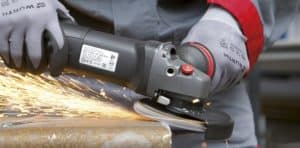
When it comes to batteries, often times energy and power density are thought to be one and the same – a battery with high energy density would be a powerful battery as well. In fact, energy density and power density are very different things. Energy density relates to the amount of energy that can be stored per battery unit whereas power density relates to the maximum amount of energy that can be discharged per battery unit. Although energy density is the more commonly used measurement to determine battery performance, power density is still an important metric to consider when talking about energy systems. Understanding the relationship between these two things is essential as it helps in determining what type of battery is necessary for different products.
Energy Density vs Power Density

*https://www.tecategroup.com/products/ultracapacitors/ultracapacitor-FAQ.php
Essentially, the main difference between energy density and power density is that batteries with a higher energy density will be able to store larger amounts of energy, while batteries with a higher power density will be able to release higher amounts of energy a lot quicker. Depending on the type of tool being energized, varying degrees of energy density and power density will be required. Take a mobile phone, for instance, phones do not need enormous amounts of energy to stay functional, instead, they need energy to be discharged consistently over extended periods of time. This means they mainly need batteries with a high energy density. On the other hand, power tools such as jigsaws and circular saws, need batteries that can release a lot of energy in one go but at the same time require the battery to have a big gas tank, which means that batteries used to energize power tools need be high in both energy and power density.
When testing batteries of power tools, they cannot be evaluated through the same means as phone batteries, as the nature of how these products are used are completely different. Phones are used at a relatively consistent rate and thus go through relatively consistent charge and discharge cycles: Your phone is left on and used throughout the day, it is then charged at night and the cycle is repeated again day after day. Power tools on the other hand, are often not used in regular patterns like phones are and instead are used in short bursts of high power output, making their discharge cycles a lot more sporadic and unpredictable. Thus, where phones can be tested through traditional battery cycling methods which track constant current and constant voltage charge and discharge profiles, a more dynamic system must be adopted when testing batteries for power tools which take into account the many variables that may come into play when testing these types of products.
Dynamic Cycling
Other technologies also have more dynamic discharge cycles; batteries for electric vehicles is one such example. Test equipment, like Arbin’s, should be able to test irregular charge and discharge cycles. This allows power tools or EV batteries to be tested in real life scenarios. Arbin’s equipment is guaranteed to give accurate and true to life simulations no matter the type of product that is being tested. Using true bipolar circuitry, our test systems feature cross-zero linearity and zero switching time between charge and discharge which is crucial in being able to test batteries more dynamically and precisely.
Looking at what dynamic cycles would mean for EVs, EV drive cycles have instantaneous transitions between accelerating up a hill, to regenerative braking when going down; braking at a stoplight that slightly generates battery charge to accelerating when it turns green, requiring a lot of power.
Likewise, power tools must run at a constant rate, like a drill spinning, but then suddenly be able to continue when faced with resistance — like when pressed into concrete or a dense wood to drill a hole. This discharge profile has large, but relatively brief periods of high power output and still needs to last several hours of this type of repeated operation.
With over 90 pre-defined meta variables and a dozen custom ones available to users, our testing systems can be fully defined and customized to provide as accurate simulations of battery usage as possible. Arbin’s “Simulation” software feature also provides an intuitive interface which allows you to directly upload your data profile into the program to simulate without any additional programming needed.
Conclusion
The performance of a power tool is just as good as the battery it holds, therefore it is crucial that power tools are fitted with batteries that can provide the necessary performance according to the given function the tool is meant to fulfill. At Arbin, not only are we able to provide a battery testing system that is consistently accurate, our systems are the most responsive to simulating very dynamic battery life cycles, which is key to properly re-producing the unique real-world test profiles of power tools, electric vehicles, and other applications that need more that constant current.


